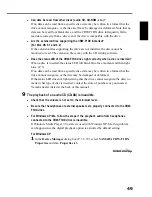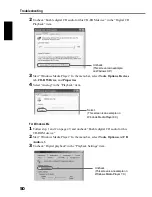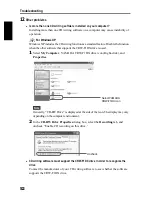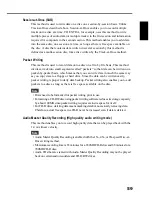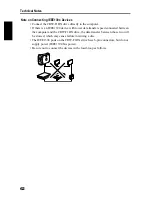
Technical Notes
60
CD-MRW (CD Mount Rainier ReWriting)
This method is a new standard of packet writing for a CD-RW disc and supports
defect control by the drive, background formatting, and disc ejecting during
formatting. It enables you to use a CD-RW disc like a floppy disk.
Formatting a CD-RW disc using CD-MRW reduces its storage capacity by about 150MB
since CD-MRW requires exclusive disc space.
Constant Linear Velocity (CLV)
The disc rotation speed is adjusted to the data transfer rate while writing/reading
data.
Constant Angular Velocity (CAV)
The data transfer rate is adjusted to keep the disc rotation speed while writing/
reading data. The Full CAV method employs CAV all through data writing/reading.
Partial CAV
The CAV method is employed for inner tracks of a disc and the CLV method for
outer tracks while writing/reading data.
IEEE1394 is a global standard approved by Institute of Electrical and Electronics
Engineers (IEEE). The serial interface has a broad bandwidth and is fast enough to
transfer large amounts of digital video and audio data bi-directionally between
electronic devices including computer peripherals. Defined as FireWire or i.LINK,
the IEEE1394 interface enables units to transfer data or various controls over a
single IEEE1394 cable. IEEE1394 enables a daisy-chain of devices (serial
connection) to transfer data between any two devices in the chain. IEEE1394 also
supports a tree (parallel) connection of devices. In addition to this flexibility,
IEEE1394 also eliminates the need for complicated settings such as device ID and
termination as found with SCSI (Small Computer System Interface) type interfaces.
As of this writing, IEEE1394 supports three different data transfer rates: 100 Mbps,
200 Mbps, and 400 Mbps.
Note
IEEE1394




